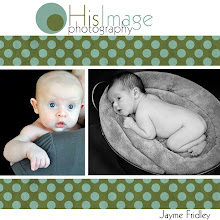Pick Your Ingredients

You want to use nutrient dense items. I used bananas, blueberries, apples, broccoli, corn, carrots, sweet potatoes, and brown rice. I would also use oats if I had them on hand. From what I've read, sweet potatoes actually have white flesh and the orange fleshed cousin is the yam. They are both heavy in nutrients so either one is a good choice for babies. I have also read that spinach is risky to prepare at home. Somehow, it causes the body to carry less oxygen in the bloodstream which can be harmful for a baby. According to the experts, it is better to leave this vegetable to the professionals. You can also include meats if you would like.
Prepare Your Produce
After you gather your produce, cut the larger fruits into chunks for steaming. There are many ways to soften your veggies. According to the research I read (from a few sources), steaming preserves the highest amounts of nutrients in the fruits and veggies. Baking is also a good option. It is not recommended to boil or microwave because this breaks down many of the good properties we are trying to deliver to our babes.
It is very easy to get a steaming basket and place it in a pot with water underneath it. Let the veggies steam just long enough to get tender. I like to keep the ingredients separate during this step so I can make blends later with single-ingredient purees.
Puree
Once the items are softened, run them through a blender until smooth. A magic bullet will also work, but may take a while longer depending on how much you have to work with. Blend each item one by one.
*If you are making foods for a younger child, new to solids, it is best to keep the foods separate until you know if they have any allergies. Introduce the foods, one by one, with about 4 days in between. This way, if they do have an adverse reaction, you can track it back to the most recently introduced food.
Place your Packaging
There are many ways to store baby food made at home. Ice trays can be a great way. I like to use my old containers from our store-bought food. In reality, I don't make all of the food she eats. ;) Small tuperware also work, and breast-milk storage bags can be great too. It is easy to line them up on a baking rack or cookie sheet before filling. Then you can place the entire tray into the freezer easily.

Play
This is where you get to be creative. My little one is now 7 months so we are eating blends. I like to include on fruit, one veggie, and one grain (at least) so that each little container has a balanced meal. Choose whatever ingredients you would like and use a mixer to combine them You could also blend them together if your child needs a super smooth texture. I threw my ingredients into the kitchen aid to mix them. Here are the combos I made yesterday....
-Blueberries, Bananas, Apples & Brown Rice
-Sweet Potatoes, Carrots and Corn
-Broccoli, Carrots, Peas and Brown Rice
-Sweet Potatoes, Carrots, Apples & Brown Rice
Package
I use my cookie scoop and fill each container to the top. Place a lid on each and label if desired. Then stack . Throw it in the freezer and you are good to go.
 Now you just have to remember to pull the next day's menu out of the freezer the night before and place it in the fridge to thaw overnight. If you want, you can mix in warm breast-milk, formula, or water to bring it to a desired eating temperature.
Now you just have to remember to pull the next day's menu out of the freezer the night before and place it in the fridge to thaw overnight. If you want, you can mix in warm breast-milk, formula, or water to bring it to a desired eating temperature.

 Now you just have to remember to pull the next day's menu out of the freezer the night before and place it in the fridge to thaw overnight. If you want, you can mix in warm breast-milk, formula, or water to bring it to a desired eating temperature.
Now you just have to remember to pull the next day's menu out of the freezer the night before and place it in the fridge to thaw overnight. If you want, you can mix in warm breast-milk, formula, or water to bring it to a desired eating temperature. 



Thanks, Jayme! I was thinking I needed to figure out how to do this before we get to that stage :-). Love the pictures along with the step-by-step instructions!
ReplyDeleteOh my goodness! What beautiful baby food! I love the step-by-step instructions. I'll admit I never have had the desire to do this - and you've changed my mind. Bethany (and Audree) will be so lucky!
ReplyDelete